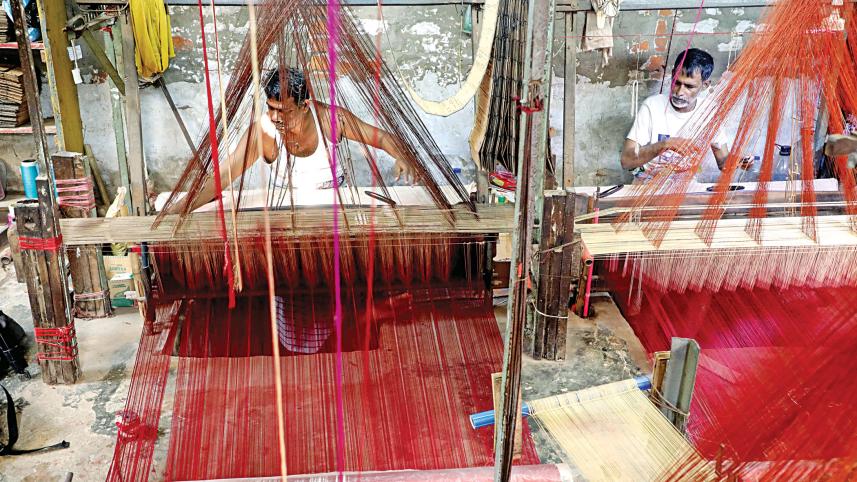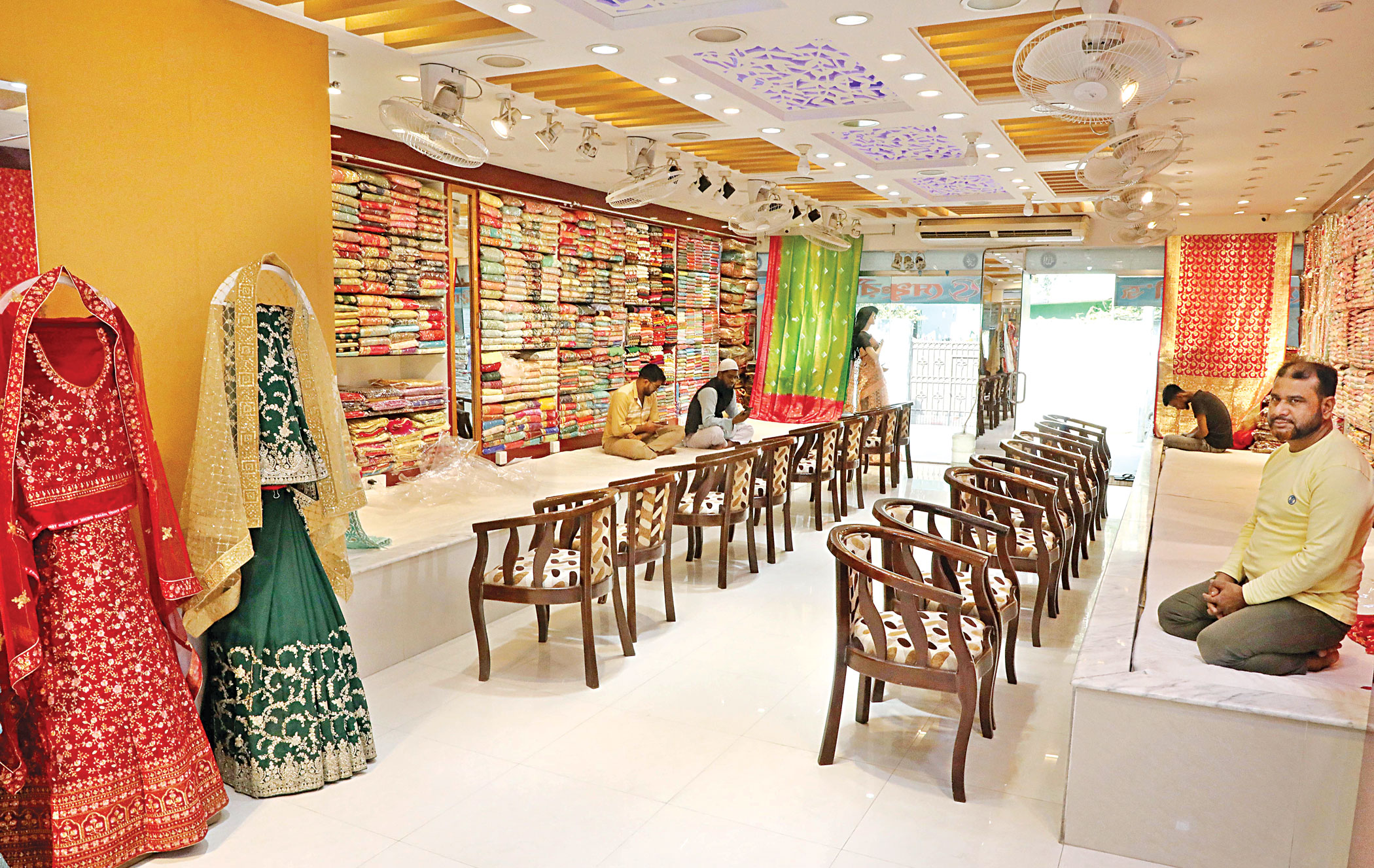Inflation puts the squeeze on sales of Benarasi saris

The rising cost of living that stems from higher prices for essential goods has affected the Benarasi Palli in Dhaka's Mirpur, where traders say sales have dipped by almost half despite it being the peak season.
Due to the fall in profits, some of the producers and traders have already started laying off their employees in a bid to survive the current economic downturn.
Benarasi saris, a highly decorative traditional garment item, see the most sales during the wedding season between November and January each year. Besides, sales grow considerably centring various occasions, such as the two Eids, Pahela Baishakh and Puja.
Shamim Akhter Siddiqui, proprietor of the Siddique Silk House in the cluster, said his business managed to recover about 80 per cent of its sales after overcoming the Covid-19 fallout.
However, the situation started deteriorating again from March-April this year as the ongoing Russia-Ukraine war fuelled inflation, forcing many to curtail their spending in the process.

"As fears have grown about the economic uncertainty, people are shopping cautiously. Even the recent political dilemmas have had an impact on business," he added.
Some 30 types of saris are made and sold at the cluster, where different varieties of Katan, Jamdani and other designs are available. In addition, saris imported from India are also sold in the area.
The Benarasi saris are priced between Tk 2,000 to Tk 30,000 while the Indian varieties are sold for Tk 3,000 to Tk 50,000, traders say.
Shamima Seema, who came to buy saris from the cluster, said she planned to buy two Benarasi and Jamdani saris for Tk 25,000 collectively on the occasion of her sister's wedding.
"Initially, I had a budget of Tk 40,000 but as living costs are getting higher, I decided to reduce my purchase," she added.
Although these saris are made in different places, including Sonargaon, Tangail, Narsingdi and Araihazar, the Benarasi Palli in Mirpur has become particularly popular.
A businessman from the cluster, seeking anonymity, said the import costs have increased for various reasons. This led to a subsequent rise in the price of saris and sales have dropped as a result.
Mohammad Javed, a local weaver, said he opened up a shop to sell women's accessories, such as handbags, alongside his traditional work to make up for the decline in profits.
"I cannot earn half as much from saris that I used to and so, I was forced to get into another business," he added.
Traders say around 1,500 weavers, including artisans, are working in Mirpur's Benarasi Palli. Also, there are about 2,500 assistants working with them while 4,000 to 5,000 people are working in the shops.
According to the Benarasi Palli Shop Owners Association, the cluster registers annual sales of about Tk 100 crore combining the wholesale and retail levels.
Mohammad Abul Kashem, general secretary of the association, said people are now buying less as they are uncertain about the coming days.
"As it is not an essential commodity, people who would previously spend Tk 10,000 are keeping their budget within Tk 5,000 now," he added.
Kashem went on to say that all the buyers who would regularly visit earlier are now nowhere to be seen. As such, sales have dropped by 50 to 60 per cent compared to the same period last year.
"Business is not good if the political situation in the country is not stable," he said.
The association said due to the increase in the price of raw materials, the cost of production has increased by 20-22 per cent. However, the wages of weavers are not increasing and for this reason, they are moving to other professions.
If the price of sarees does not increase, then the wages of artisans cannot be increased. So, the profit margin has come down due to higher production costs, it added.
According to the SME Foundation, the journey of the Benarasi cluster started after the partition of the country in 1947.
The entrepreneurs mastered the work of making saris in different factories and later started working in factories of their own on a small scale.

 For all latest news, follow The Daily Star's Google News channel.
For all latest news, follow The Daily Star's Google News channel.